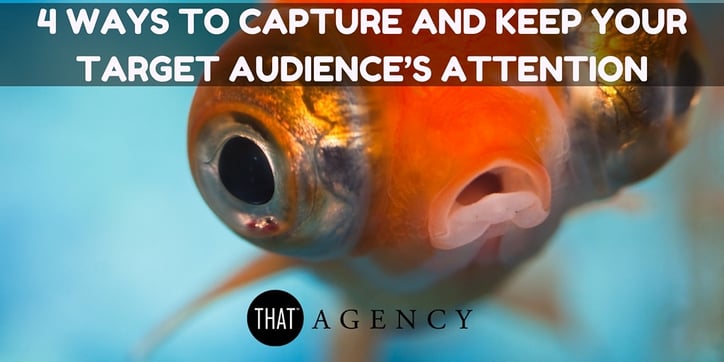As the world becomes more digitally connected, we are being targeted with hundreds of thousands (if not millions) of content pieces daily. To avoid having our brains actually burst from content overload, we have learned to pay less attention to irrelevant or inconvenient content on our desktop computers and mobile devices. Microsoft is particularly interested in how the internet has influenced human behavior and found that the average human attention span is rapidly declining. In 2000, humans had an attention span of 12 seconds. In 2015, a study showed that humans now have an average attention span of just 8 seconds…. which is less than a goldfish. No wonder it’s hard to keep the Game of Thrones storyline straight.

Since we are paying less attention to more content on the internet, how can you ensure that you're capturing and retaining your target audience with inbound marketing? Take a gander at these data-backed inbound marketing strategies and tactics!
1. Be Sure That Your Website Loads Quickly
This may be a no-brainer, but how quickly your website loads can negatively impact conversions. Research shows that even a 1 second delay in site loading time can lead to a 7% loss in conversion. This is time you can’t afford to waste. Images that aren’t properly optimized can be a major cause for slow page loads. If your website takes 2 or more seconds to load, you could be losing customers.
2. Leverage Compelling Visuals
Studies show that the brain processes images 60,000 times faster than text. Since it takes our brains only 0.25 seconds to process visual content, it’s absolutely crucial that your marketing campaigns have compelling graphics. Use this creative to help tell your story and make the most of the attention you win. With so much distraction on the internet, we have to make the most impact with visuals to truly snag a consumer’s attention. This doesn’t just end with images. Videos are also important! Website visitors spend 100% more time on pages with videos and users are 85% more likely to purchase an item after watching a product video.
3. Think Mobile
Almost 80% of time spent with social media is now done on a mobile device and 52% of all social sharing is done via a smartphone. Since 41% of all social media users discover new brands on social networks AND their usage is becoming more mobile, it only makes sense to calibrate all of your efforts to mobile optimization. It’s not enough anymore to be mobile “friendly” if you want to catch the attention of the more mobile, more distracted digital consumer.
4. Try and Try Again
In an ideal world, marketers could place one or two campaigns in a market and see the conversions roll in. Unfortunately, that isn’t realistic in the super-distracted digital landscape. Users need to see your messaging multiple times for it to resonate. According to the mere-exposure effect (ahem psychology majors), consumers need to be exposed to your content at least 7 times before they will take action. The more users see your campaign, the more likely they will convert. Does this mean you should blast 25 Facebook Ads to the same audience? No. However, you SHOULD have a omni-channel campaign with consistent messaging that surrounds your target audience in the digital spaces where they spend the most time.
Did I lose you? Are my 8 seconds up? I hope not! This can be very overwhelming and sometimes we all need a helping hand in getting our campaigns in the green. If you have any questions or find other data that helps combat the dwindling attention span of the modern digital consumer, please contact us! We love to talk inbound marketing!





.jpg)